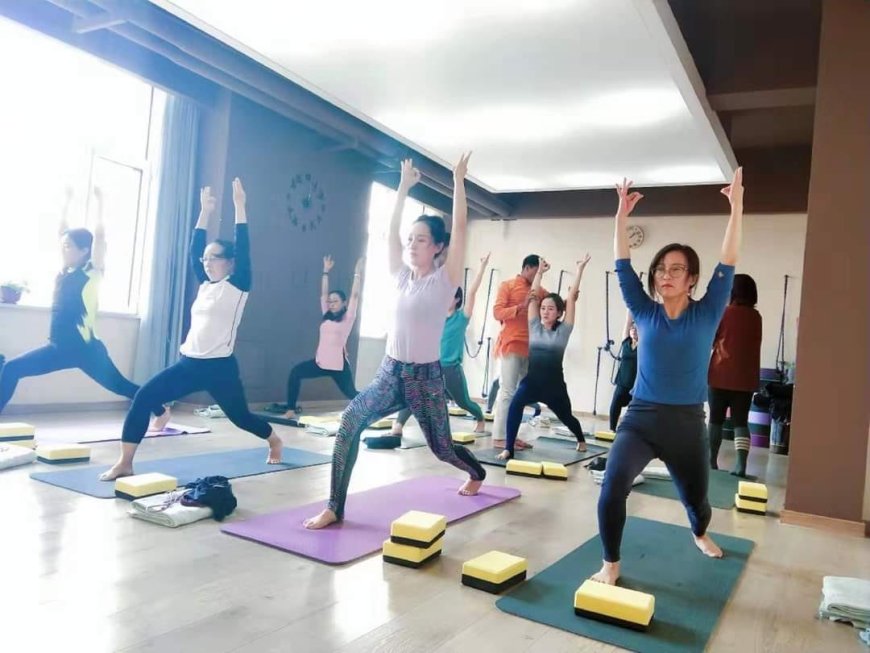Creating Balance: A Look Inside Yoga Studios in Canada
This article takes a deeper look inside yoga studio in canada — how they’re structured, what they offer, and why they play a meaningful role in today’s wellness landscape.

In the fast-paced world of deadlines, digital screens, and daily stress, more Canadians are turning inward — seeking peace, strength, and balance. Yoga, an ancient practice rooted in mindfulness and movement, has seen a remarkable rise in popularity across Canada. From bustling urban centers to tranquil small towns, yoga studios are now vital sanctuaries where individuals come to breathe deeply, move mindfully, and reconnect with themselves. This article takes a deeper look inside yoga studio in canada — how they’re structured, what they offer, and why they play a meaningful role in today’s wellness landscape.
The Growth of Yoga Culture in Canada
Yoga began gaining mainstream popularity in Canada in the late 20th century, but it was during the last two decades that its presence truly expanded. Today, cities like Toronto, Vancouver, Montreal, and Calgary boast hundreds of yoga studios, while smaller communities often have at least one dedicated space for practice. According to Statistics Canada and various wellness reports, millions of Canadians practice yoga regularly, with participation highest among women and growing steadily among men and seniors.
The surge in yoga’s popularity is attributed to increased awareness of mental health, physical well-being, and the desire for holistic healing methods. The rise of social media, online yoga influencers, and wellness apps has also contributed to spreading awareness and accessibility.
A Diverse Landscape of Yoga Studios
Walk into any Canadian yoga studio, and you’ll find diversity not just in the people attending classes, but in the styles and philosophies of yoga being taught. Some studios focus on traditional Hatha or Ashtanga yoga, preserving ancient teachings and sequences. Others take a more modern approach, offering Power Yoga, Hot Yoga (often in heated rooms), Vinyasa Flow, Yin Yoga, or restorative practices.
Studios in urban areas like Toronto and Vancouver often provide a full schedule of classes from early morning until late evening. They cater to a broad demographic — from working professionals and students to retirees. Many studios offer special classes such as:
Prenatal Yoga for Expectant Mothers
Kids’ Yoga to introduce mindfulness early
Yoga for Seniors focuses on gentle movement and joint health
Therapeutic Yoga aimed at recovery or trauma healing
Some studios even combine yoga with other wellness offerings such as meditation sessions, sound healing, aromatherapy, and Ayurvedic consultations.
Studio Design: Creating a Calm Space
The physical environment of a yoga studio plays a crucial role in setting the tone for practice. Canadian yoga studios typically emphasize natural elements and minimalist design. Wooden floors, warm lighting, indoor plants, and neutral colors create a calming ambiance. Incense, essential oils, and soft instrumental music further enhance the atmosphere.
Studios often include spacious reception areas, changing rooms, and small retail sections selling yoga mats, eco-friendly gear, books, and wellness products. Community bulletin boards often display local events, workshops, or spiritual retreats, encouraging connection beyond the yoga mat.
Many newer studios prioritize sustainability, using non-toxic paint, recycled materials, and energy-efficient lighting. The design reflects a broader Canadian commitment to eco-conscious living and mindfulness.
The People Behind the Practice
The heartbeat of every yoga studio is its teachers. In Canada, yoga instructors come from varied backgrounds — some are trained locally, while others have studied in India, Bali, or the U.S. Most teachers undergo a minimum 200-hour Yoga Teacher Training (YTT), though many pursue advanced certifications.
Canadian yoga teachers often blend traditional yogic philosophy with Western anatomical knowledge. They are typically trained to accommodate all levels, from beginners to advanced practitioners, and to create inclusive, non-judgmental spaces. Many teachers also undergo trauma-informed yoga training to support students with mental health challenges or past trauma.
Beyond teaching, studio owners and staff often take on roles as community builders. They organize charity classes, host educational workshops, and provide platforms for artists, healers, and wellness experts to collaborate.
Community and Connection
Yoga studios in Canada are more than places to stretch and breathe — they are hubs for community connection. Many studios offer free classes during special events like International Yoga Day or wellness festivals. Some partner with local nonprofits to offer yoga for marginalized groups, such as refugees, Indigenous communities, or people experiencing homelessness.
Workshops, teacher trainings, and retreats foster deeper learning and bonding. Whether it’s a weekend mindfulness retreat in British Columbia or a monthly moon circle in Ontario, these offerings build a sense of belonging that extends beyond the physical postures.
Online and Hybrid Models
Since the COVID-19 pandemic, many Canadian studios have adopted hybrid models. While in-person classes have resumed, online sessions via Zoom or pre-recorded platforms continue to be popular. This shift has made yoga more accessible, particularly for people in remote areas or those with limited mobility.
The Future of Yoga in Canada
As the wellness industry continues to evolve, yoga studios in Canada are expected to diversify further. Trends such as trauma-sensitive yoga, inclusive yoga (for all body types and abilities), and fusion practices (e.g., yoga with dance, tai chi, or martial arts) are gaining momentum.
Conclusion
Yoga studios across Canada reflect a powerful shift toward mindful living. They are not just places for physical fitness but sanctuaries for healing, growth, and connection. With welcoming spaces, passionate teachers, and inclusive communities, these studios continue to create balance in the lives of countless Canadians — one breath, one pose, and one mindful moment at a time.













































































































![Are AI Chatbots Replacing Search Engines? AI vs Google [New Research]](https://www.orbitmedia.com/wp-content/uploads/2025/05/How-often-are-we-using-AI-chatbots_.webp)

















































